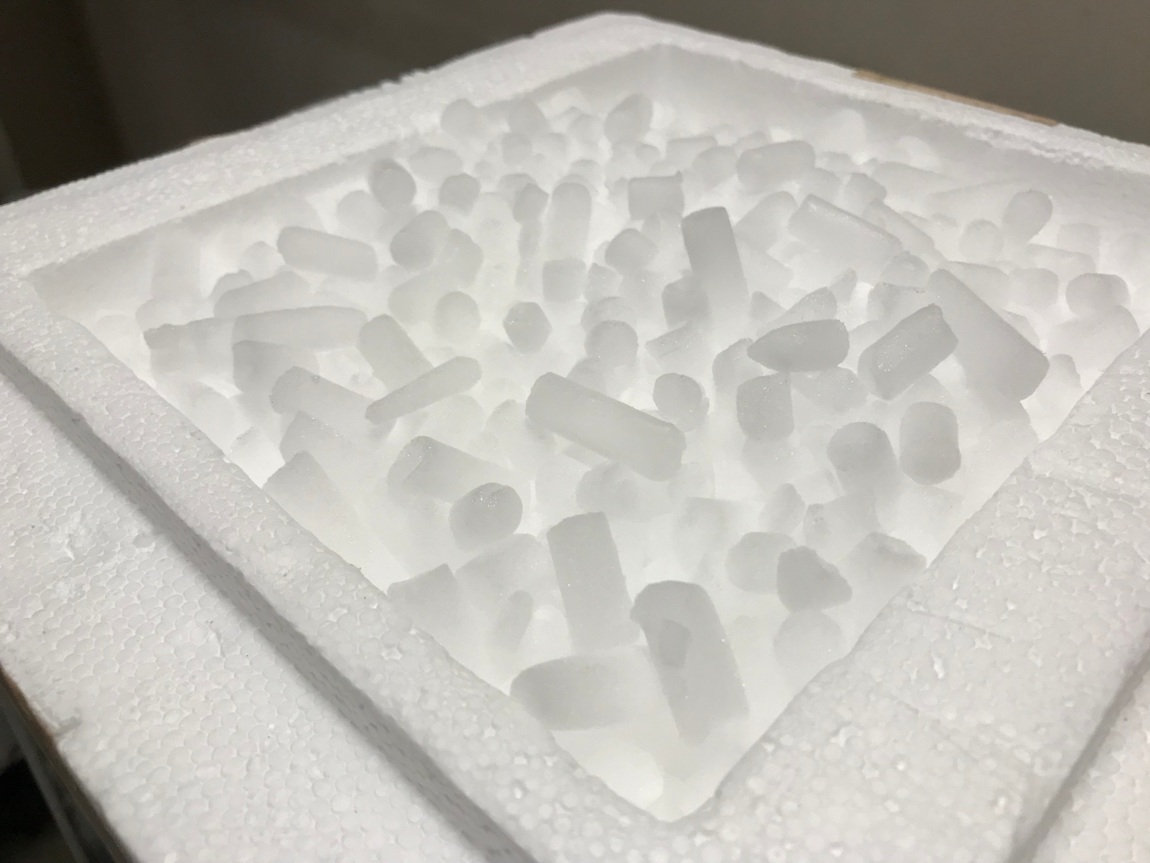Temperature controlled packaging: 3 steps to ship dry ice safely
Dry ice is a great solution for keeping items such as medical supplies and frozen food at a stabilized temperature during transport. Some of the benefits include that it does not change the taste of food and it is generally inexpensive temperature-controlled packaging solution as well as cost-effective in larger quantities.
But as you will likely know already, dry ice is classified as dangerous goods because of the safety hazards it can cause. If you come into direct contact you could fall victim to frostbite and burns, and although the substance is not toxic, it can create a respiratory hazard due to the impact it has on the air in a room.
So, you may be wondering, how can you pack and safely ship dry ice and avoid any potential hazards? Luckily, it is avoidable if you follow the right steps. In this article, we will be exploring what these steps are and how they can be implemented.

Step 1: Choosing the correct packaging for Dry Ice
Dry Ice needs to be shipped in packaging that will allow the release of carbon dioxide gas, whilst preventing a build-up of pressure that might fracture it. An airtight container could cause expansion that can lead to an explosion. The major danger of a sudden release of carbon dioxide like this is that it can be suffocating in a confined space.
The packaging must be able to withstand extremely low temperatures and remain undamaged by Dry Ice. Shipping dry ice requires many layers to ensure that it is shipped correctly. The best material
for this is Styrofoam that is at least 2 inches thick in length, but to attach the important labels for shipping, you will need it to be inside a larger cardboard box.
Food shipments need to be packaged between dry ice blocks inside the insulated container. The best material for the container is polystyrene foam as it is rigid and holds its shape while still protecting the items inside during shipping. The insulated box should then be put inside an outer corrugated cardboard box for extra protection, making sure that the layers are not airtight.
At Swiftpak, we recommend using Polystyrene EPS boxes as they provide excellent thermal performance for temperature sensitive items.

Step 2: Wear the right protective clothing
Before handling dry ice, you must receive training by anybody who has experience with dry ice in the supply chain. Following that, when coming into contact with the substance, it is important to take precaution by wearing the correct clothing to protect yourself. Goggles must be worn to protect the eyes, bibs to protect the body and clothing and special gloves should be worn to avoid the ice burning you.
3. Choosing the right labelling for Dry Ice shipments
When shipping dry ice, it is also crucial to make sure the correct labelling is provided so that the receiver knows how to handle the package. The outside of the box must carry a Hazmat Class 9 Miscellaneous label paired with the carbon dioxide label. Some other instructions include:
- Mark the outside of the package with the UN number: 1845.
- The proper shipping name should be clearly displayed: Dry Ice or Carbon Dioxide Solid. Class 9.
- The net weight of the dry ice in kilograms should also be included.
- The shippers name and receivers address must also be labelled directly onto the package. Avoid placing labels in a plastic pouch as it will not stay attached to the package due to the condensation.
Shipping requirements and documentation could vary between carriers so if you are unsure if these instructions apply to you then it is always best to check.
Temperature controlled packaging from Swiftpak
At Swiftpak, we provide a wide range of temperature-controlled packaging for perishable and temperature sensitive products. If you want to find out more about dry ice and our other solutions, visit our temperature-controlled packaging page for further information. Alternatively, contact our packaging experts today, they will be happy to help with any enquires!